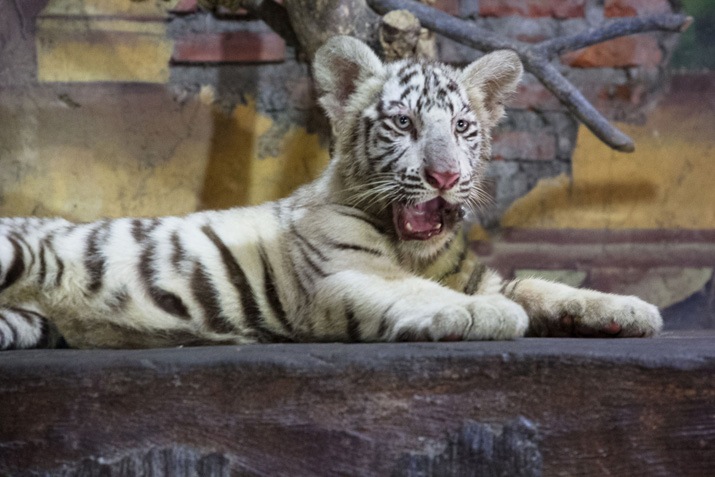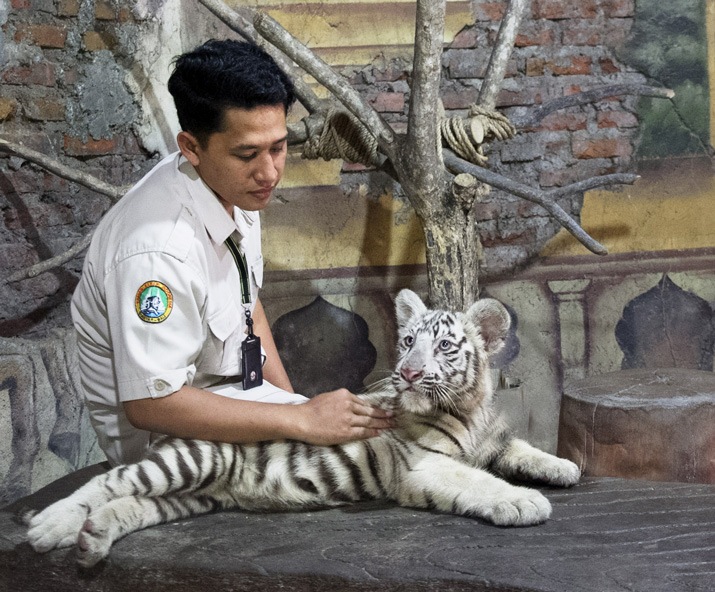The White Tiger is one of the rarer relatives of the big cats. Due to their white coat they are often referred to as the bleached tiger.
White Tigers are in fact a subspecies of Tigers and are the pigmented variation of the Bengal Tiger, sometimes found in the wild on the Indian subcontinent.
Here are some interesting facts about the White Tiger:

Fact #1: Faster growth
White Tigers have been observed to grow faster compared to their orange relatives. They are bigger from birth and continue that pattern into their adult years. They are considered fully grown when they are 2-3 years old.
Fact #2: Unique stripes
Like all tigers, their stripes act like fingerprints. No two tigers will have the same pattern of stripes. Their stripes are also a part of their skin pigmentation, meaning that if shaved, their stripes would still be visible and regrow into their white coat.
Fact #3: Their white color is extremely rare
Their white fur is the result of a lack of pigment called pheomelanin that occurs in natural orange tigers. However this is extremely rare and happens only once in 10,000 births.
On top of that, both parents must carry that unusual recessive white color gene in order to give birth to a white baby tiger cub.

Fact #4: They grow darker in the cold
Together with the Siamese Cats and Himalayan Rabbits, the White Tiger has an enzyme that causes a reaction in their fur turning them darker when exposed to colder temperatures.
This is believed to be caused by the weakened immune system linked to their genetic pigmentation.
Fact 5: Their white fur is not due to albinism
The White Tiger is an actual subspecies of Tiger, formally known as the White Bengal Tiger. Unlike traditional albinism, they still carry some traces of the pigment that creates their fur color.
Some white tigers even have traces of their original orange color in their white coat.
They have always captivated humans due to its beauty and rarity in the wild.
They are powerful, adaptable animals in their natural environment with almost no predators.
Visit these majestic big cats only at Bali Safari Park while doing Jungle Hopper!






